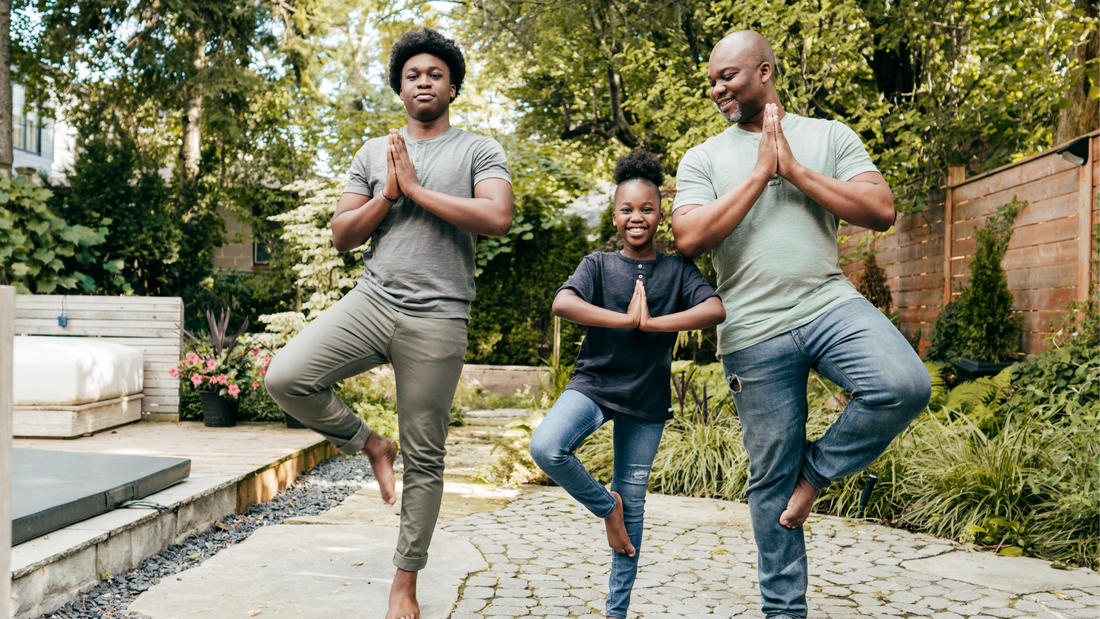
How to get enough exercise if you hate to workout or go to the gym?
Naturally YoursShare

Exercise – it’s important! It is important for everyone – children, adolescent and adults of all ages need regular exercise.
Exercise promotes good health, and we all should stay active throughout all the stages of life regardless of the body type or BMI.
Benefits of regular exercise:
- It increases energy levels
- It improves muscle strength
- It can help you to maintain a healthy weight
- It improves brain function
- It is good for heart
- It lowers your risk of developing Type 2 Diabetes
- It enhances your immune system
- Staying active reduces the likelihood of developing some degenerative bone diseases
- It may help to reduce the risk of certain cancers
- Active people tend to sleep better
- It improves mood and gives you an improved sense of well-being
- It can prevent and treat mental illness like depression
- Keeping fit can reduce some of the effect of ageing
How much should you Exercise?
An individual should get at least 150 minutes of exercise (moderate) per week.
This can be achieved through 30-60 minutes of moderate-intensity exercise five times a week or 20-60 minutes of vigorous-intensity exercise three times a week or a combination of both types.
For those who are beginners, gradual progression of exercise time, frequency and intensity is recommended. You are more likely to stay on track and avoid injury if you start gently.
Even if you can’t achieve these minimum targets you can still benefit from some activity.
You don’t have to do difficult workouts to lose weight or improve your health and fitness.
A Guide to Home-workout

Know your goals: Determine what you want to get out of it. Are you looking to quit the gym entirely and stick to the home workout?
Plot out your space: Pick a space that has room for at least a yoga mat – this should be a large enough area to stretch and do core exercises – and try storing your equipment under the bed or the closet to free up the space when you aren’t working out.
Establish a schedule: Now that you don’t have to go to the gym at 6AM sharp, you might find yourself putting off your home workout with happy hour with Netflix.
Soon, you will end up skipping your home workouts altogether. A simple solution to that is build a consistent schedule, just like a gym.
It will help you stick to your home workout. That way when someone asks you can we meet at 6.30 you can say sorry I have an appointment lets make it 7/7.30.
Stock up on the right gear: Before you panic on the money you have to spend to make your home workout worth it, know that you don’t need to buy any fancy tools to create an effective home workout.
Before you begin: Before you start working at home, it’s important to follow a few precautionary measures.
Always consult your healthcare provider prior to starting this or any other workout program. Telling others about your fitness plan can help you to stay accountable.
Workout length: When you are really getting started, setting up a realistic goal for exercise is key.
You don’t need to sweat for hours to achieve your fitness goal. Just a few minutes each day can make a real difference in the way you look and feel.
If you haven’t exercised in a long time, you might be eager to get fit. This could drive you to take on grueling workouts. But, your body may need to start at a slower pace.
Basic Beginners Home Workout:

Walking is one of the best form of exercise for beginners. However, finding a good location and enough time is some times hard.
What if you need to be home at certain time for a child or something else? Luckily, simple, everyday activities can turn into a workout in no time.
1. Getting in and out of a chair:
The simple act of sitting down in chair and standing up requires you to tighten your tummy, stabilize your hips and engage your leg muscles.
It can be a great beginners exercise to do at home. This moment mimics squats which is one of the bodyweight exercise to do at home.
2. Walking up and down stairs:
Going up the stairs builds strength in your upper and lower legs. It’s also a good workout for your glutes (the muscle in your back side).
The heart rate increases when you walk up the stairs, which makes a good cardio. And walking down the stairs needs balance and knee stability.
3. Getting up and down from the floor:
This requires full-body strength, flexibility and co-ordination.
If you don’t have much time for exercise the daily household work is a good type of home exercise to stay fit.
E.g. Standing on your toes to dust a high shelf helps strengthen your calves. Adding a lunge movement to your vacuuming routine will be the good workout for your hips and thighs.
The Bottom Line
Exercise offers incredible benefits that can help us improve every aspect of the health from the inside out.
Whether you practice a specific sport or follow the guideline of 150 minutes of activity per week, you will improve your health in many ways.
ABOUT THE AUTHOR

Anuja Dani, Certified Sports Nutritionist
Founder, Harmony Wellness,
M.S.c. Nutrition & Dietetics
Diabetes Educator
